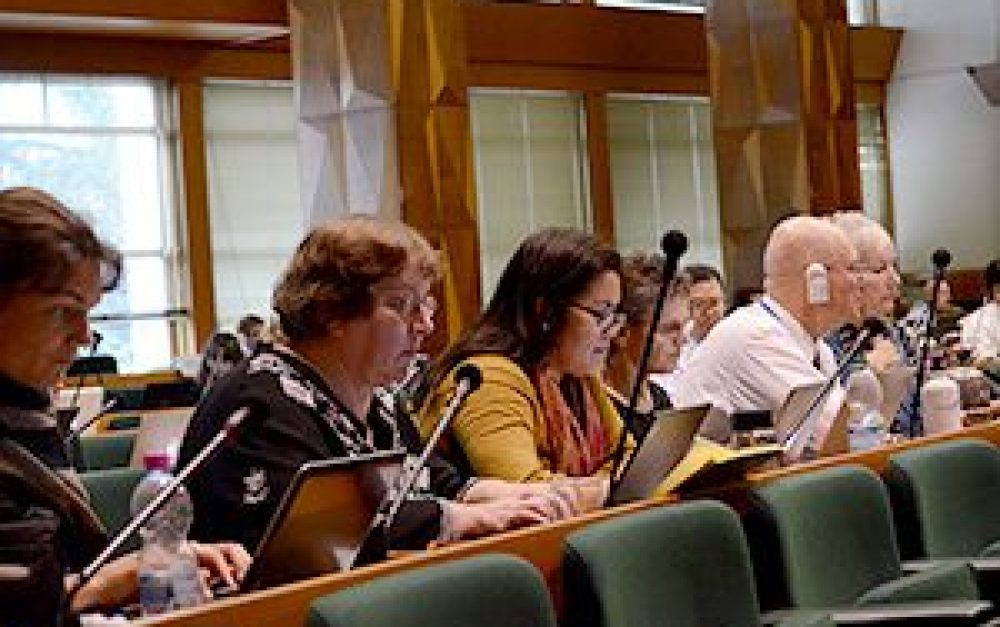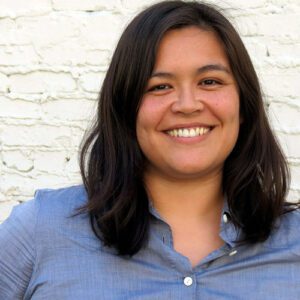Right now, I'm sitting in a room at the Food and Agriculture Organization (FAO) of the United Nations, located in Rome, Italy. Though I get to walk by the Coliseum every morning on the way to the FAO building, I don't leave the building until well after the sun has set.
I'm representing PAN at the Stockholm Convention's Persistent Organic Pollutants Review Committee (POPRC), and learning a great deal about the scientific review of new POPs that's part of the global chemicals treaty process.
The Stockholm Convention was signed in 2001 and came into force in 2004. While the United States has not yet ratified the treaty, 179 other countries around the world have. At this meeting, experts from 31 countries — along with observers from industry and non-governmental organizations like PAN — meet to review proposals for adding new chemicals to the list targeted for global phaseout.
Why do POPs matter?
A persistent organic pollutant (POP) is a chemical characterized by the following: long-range transport, meaning it is found far from where it is used; toxicity, meaning there is evidence of potential for adverse effects on human health; bioaccumulation, meaning it concentrates as it moves up the food chain; and persistence in the environment under conditions found somewhere in the world.
POPs used today will still be around when your great-grandchildren are born.
POPs break down very slowly in the environment, and therefore a known POP, such as DDT or endosulfan, that is used today will still be around when your great-grandchildren are born. These properties place an unjust burden on indigenous peoples in the Arctic, where POPs accumulate from other parts of the world, and are found at dangerous levels in the body fat of marine mammals that are an important part of traditional diets.
In addition to the problem of bioaccumulation through diet, a compound like DDT is lipophilic (literally, "fat-loving") and known to build up in fatty tissue and be passed on in breast milk, providing yet another route by which children are exposed to a maternal load of environmental contaminants.
The POPRC process
I'm here in Rome as an observer, along with my colleagues from Alaska Community Action on Toxics, Inuit Circumpolar Council, International POPs Elimination Network and other PAN regional centers. I'm learning a lot from these seasoned colleagues, who are thankfully willing to answer all of my questions.
Observers are allowed to comment in "interventions" on proceedings in plenary — after the official committee members are done commenting. In the plenary session, documents on specific chemicals move through the various stages of the review process.
If there's disagreement over whether or not a document has sufficient evidence, or if members argue the fine points of interpretation, then the Chair asks for a "contact group" to meet. Observers may also participate in contact group meetings. A document will then be produced by a "drafting group" and come back to the plenary session for further discussion — and hopefully, decisionmaking.
And of course, there is lobbying, which involves speaking to committee members in the hallways between sessions to — from the PAN perspective — convince them to make decisions that best protect people and the planet.
Hot topics
Some pesticides are POPs, but not all POPs are pesticides. A number of chemicals are up for discussion at this meeting, including two pesticides: pentachlorophenol, used most commonly as a wood preservative, and dicofol, which is an acaricide and miticide, and newly nominated for global phaseout by the European Union.
Other topics of interest are climate change and endocrine disruptors. Because climate change will affect how POPs impact human health and the environment, there is a draft document on potential impacts for committee members to consider in future decisionmaking.
Endocrine disruptors have also been identified as a topic to consider given the threat they pose to human health. The ability of endocrine disruptors to act (at times) at very low doses or to elicit non-monotonic dose response curves will continually come up as chemicals that have endocrine-disrupting properties move through the nomination process.
Endocrine disruptors getting special attention
Prior to this meeting, I had the opportunity to participate in a roundtable discussion on endocrine disruptors in Geneva with PAN Swiss, a newly anointed part of the PAN International network. While there, I was lucky enough to meet John Peterson Myers, one of the co-authors of Our Stolen Future, a seminal text on endocrine disruptors.
PAN Swiss is campaigning to make Switzerland pesticide-free, with a focus on the dangers of endocrine disrupting pesticides — not all pesticides are endocrine disruptors, but many are. We'll be following the progress of this important and creative campaign work, and will keep you posted.
Photo credit: John Wickens








